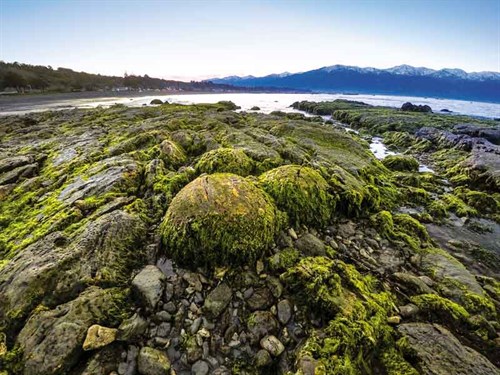To say it’s been a rough year for Kaikoura is a bit of an under-statement. The 7.8-magnitude earthquake that rocked the region on 14 November 2016 caused damage to State Highway 1 on an unprecedented scale, severing all road access to the township.
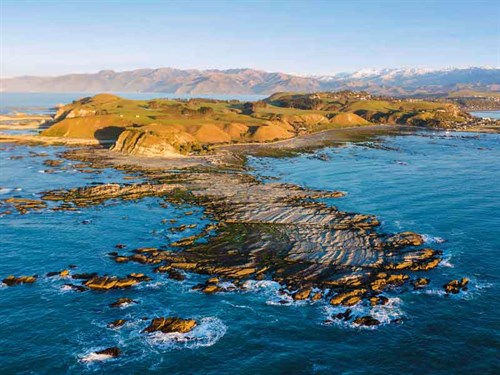
For a tiny community whose lifeblood is the tourists and visitors who flock there each summer, the impact has been massive. From the souvenir shops to the marine tours, the restaurants to the motels, hundreds of businesses have had to get by with a fraction of their usual income, while also dealing with the physical damage and emotional trauma the earthquake left in its wake.
But what has given the community vital life support over the past year has been the many motorhome and campervan travellers who visited Kaikoura once road access was available.
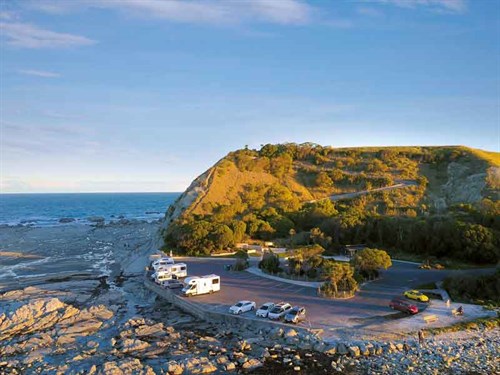
Destination Kaikoura’s general manager, Glen Ormsby, says the steady stream of motorhome travellers coming to support the community has been greatly appreciated.
“Thank you if you are one of those travellers, it has been noticed and has been appreciated.”
SH1 from Kaikoura to Blenheim is set to reopen on 15 December, allowing Kaikoura’s lifeblood to pulse with strength again. And with a beautiful, sunny summer already making its presence felt, the future is looking bright for this tiny coastal town.
Whales and dolphins and seals
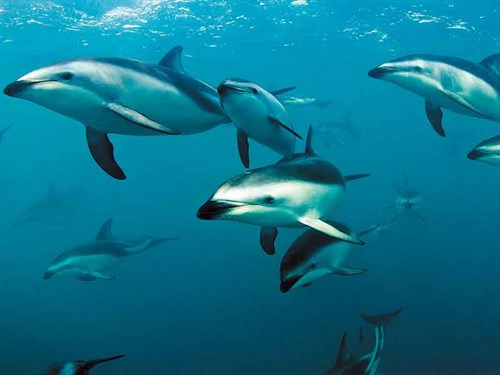
If an up-close encounter with whales and dolphins is top of your bucket list, then Kaikoura is certainly the place to tick it off. I was lucky enough to enjoy four fabulous days in Kaikoura last month where I managed both a Whale Watch tour, and a swim with the dolphins.
Kaikoura is one of the few places in the world that sperm whales can be seen year round close to shore, and being witness to their natural behaviour in this unique environment was a truly unforgettable experience.
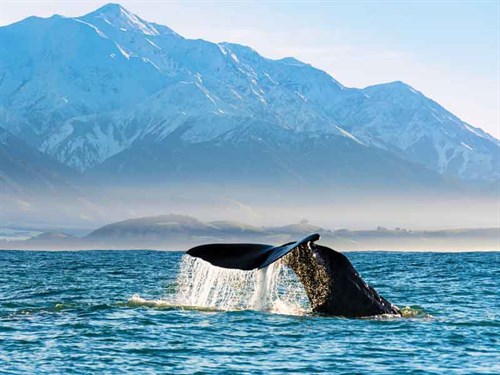
On a crisp and cloudless morning, back-dropped by the magnificence of snow-capped mountains, the sight and sound of this incredible beast cruising quietly through the glassy water provided what can only be described a spiritual moment. A moment made even more special when a second whale surfaced – taking everyone by surprise – blowing a huge water spout into the air, capturing a rainbow of colour in its droplets.
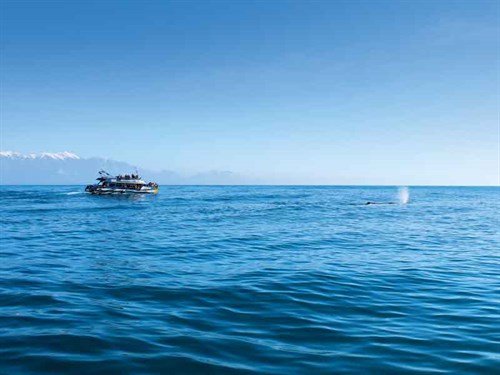
Our tour group sat quietly watching, cameras and video capturing every moment, until both whales decided to head back down into the 1200m deep Kaikoura Canyon, signalling their farewell with a flick of their giant tails. If you fancy getting even closer to the marine life, I can recommend swimming with the dolphins with Dolphin Encounter.
Although we saw a very playful pod of dusky dolphins on our Whale Watch, being in the water with them was another level of amazing. Having only snorkelled once before, I admit to being just a little nervous when the time came to slip off the edge of the boat into a bottomless ocean. If you haven’t snorkelled before, the crew members can give you a basic ‘how to’ on board, but I’d definitely recommend having some snorkelling experience, and confidence in the water.
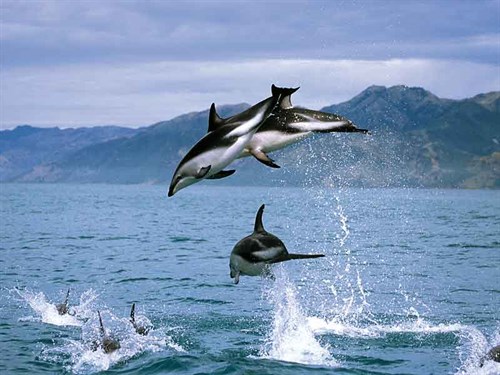
Within a few minutes we were surrounded by a curious pod of dusky dolphins. Duskys are renowned for their acrobatic flips, jumps and spectacular somersaults. Underwater, the dolphins are intrigued by human visitors and we were told to make plenty of dolphin-like noises to encourage their curiosity. The dolphins spent a good 30 minutes or so ducking and diving beneath us. Their agility and speed was incredible and a clear reminder that we were mere guests in their environment.
At one point we were treated to a visit by southern royal albatross who sat on the waves for a few minutes bemused at the spectacle of humans bobbing about making strange squawking noises.
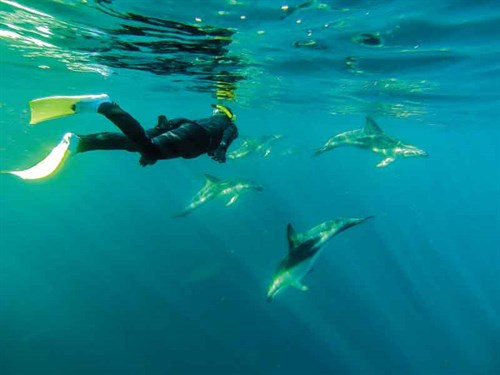
With the sea being rather choppy that day, and the ‘motion of the ocean’ definitely getting the better of me, I was pleased when the skipper announced it was time to head to shore.
Back on land, a walk around the peninsula to the Point Kean fur seal colony provided endless photo opportunities as sunbathing seals lazed about, yawning and scratching, and occasionally lolling back into the water to cool off. At low tide you can now walk about one kilometre out on the seabed, right around the entire peninsula; something that wasn’t possible before the big quake.
World famous for crayfish
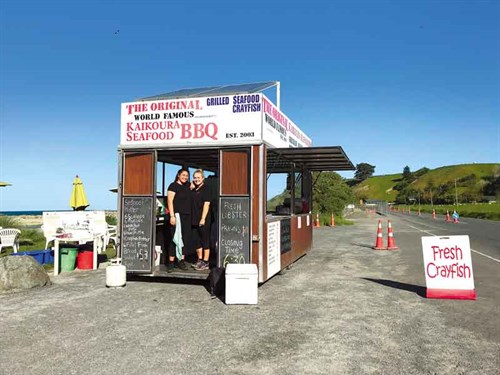
To top off a few hours of seal watching and peninsula walking, I’d recommend a stop at The Original World Famous Kaikoura Seafood BBQ (on Fyffe Quay – you’ll pass it on the way to the point).
Choose a freshly caught crayfish from the chilly bin, take a seat at one of the seaside picnic tables, and get ready to tuck into a plate of perfectly barbecued cray and salad. Kaikoura is famous for its crayfish, in fact Kaikoura literally translates to mean ‘to eat crayfish’ – and it would be a shame not to while you’re here. But if crayfish is not to your taste, they also do a great whitebait fritter or seafood platter.
Visiting history
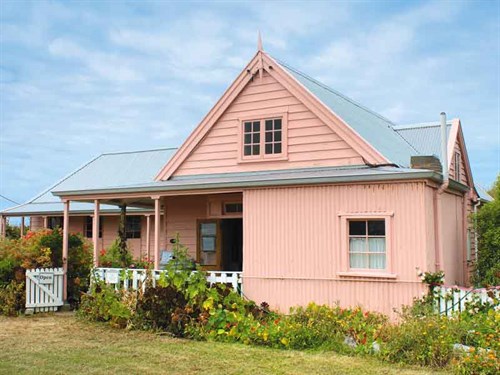
If you fancy delving into a bit of history after lunch, stop in at Fyffe House on your way back to the town centre. Unmissably pink, Fyffe House is the oldest surviving building in Kaikoura, with many of its rooms remaining much as they were in the mid-1800s, when the house was built.
The last remnant of a pioneer whaling station, the house is open for visitors to walk through (for a small fee), to see and hear the stories of Kaikoura’s whaling past. Interestingly, some of the building’s foundations are actually huge whale bones which, due to their porous structure, are thought to have absorbed much of the shock from the earthquake in 2016, protecting the building from any significant damage.
A spot of shopping
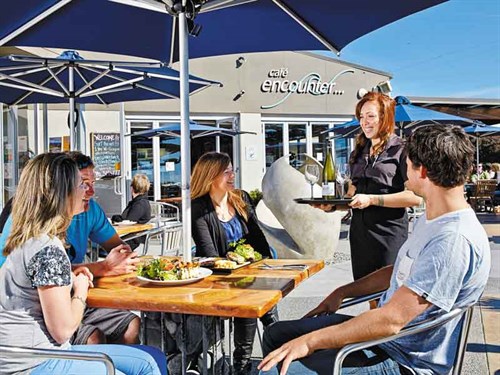
Within the Kaikoura township itself, the majority of shops and businesses are back in full swing and awaiting a much-needed summer tourist influx.
The main strip is home to cafes, boutique stores, and souvenir shops offering a pleasant afternoon of shopping and a chance to chat with the friendly locals.
If you’re looking for a relaxing few hours slightly further out, I can recommend a trip to te Lavendyl lavender farm on Postmans Road (about 10 minutes’ drive from the town centre). Take a stroll through the tranquil gardens, enjoy the relaxing aroma of lavender and treat yourself to a few lavender goodies such as bath oils, honey and soaps. Owner Myra is looking at options for accommodating motorhomes in the future, so watch this space.
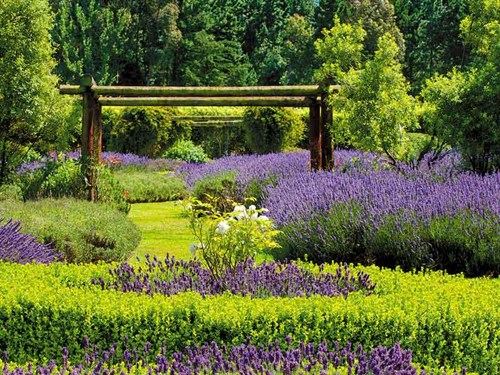
New since the quakes
- Dinosaur eggs: Spherical rocks resembling huge dinosaur eggs have been uncovered along the uplifted seabed at Gooch’s Beach, with perfectly round rocks as big as beach balls.
- Hope Springs: Another natural phenomenon resulting from the quakes is the bubbling waters within Whalers Bay. Discovered by two Kaikoura Kayak guides, the bubbles are thought to be stemming from the Hope Fault that lies beneath the area. For a close-up look at Hope Springs, contact Kaikoura Kayaks.
- SH1 cycle and walkway: A 60-kilometre section of the quake-hit highway is set to receive funds for a new separated cycleway and walkway between Okiwi Bay and Mangamaunu which will provide a safer, more enjoyable way to experience this section of the iconic coastline by foot or bike.
- New marina: On 14 November 2017, the Kaikoura Marina was reopened, with new berths for Whale Watch Kaikoura, Dolphin Encounter and Albatross Encounter. The new marina signals a significant leap forward in the rebuild and a sense of a new beginning for the community.
- Kaikoura museum: Housed in its landmark ‘craypot’ building, Kaikoura’s new museum opened just weeks after the quake last year. One of the museum’s long-term displays, ‘New Normal – The Kaikoura Earthquake Exhibition’, looks at the impacts of the quake on the Kaikoura community, its landscape and the natural environment.
Access to Kaikoura
- Inland Route 70 (Waiau – Kaikoura): Open 24/7.
- SH1 North (Picton – Kaikoura): Open daylight hours.
- SH1 South (Christchurch – Kaikoura): Open daylight hours.
- Check the latest conditions at least two hours before travel in case of delays, and for confirmed daylight hours. Visit nzta.govt.nz/p2c or phone 0800 4 HIGHWAYS.
- Do not rely on Google Maps or your GPS: follow signage enroute or check nzta.govt.nz/p2c.

